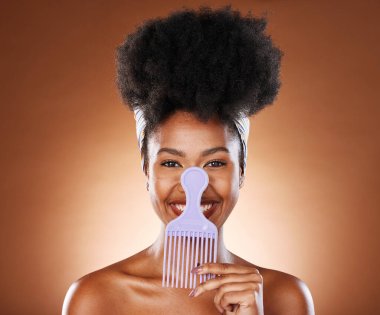Mastering the Art of Co-Washing: How To Co-Wash 4C Hair

How To Co-wash 4C Hair
Welcome to the ultimate guide on how to pamper and care for your stunning 4C curls through the transformative art of co-washing.
In this comprehensive guide, we’ll delve into how to co-wash 4C hair and explain why it’s a game-changer for your hair’s health and vitality.
Whether you’re a seasoned naturalista or just beginning your curl care journey, we’ve got you covered. Get ready to unlock the secrets behind effective co-washing, step-by-step techniques, and invaluable tips that will leave your 4C hair moisturized, defined, and radiant.
This post contains affiliate links and I may earn a small commission when you click on the link at no additional cost to you. As an Amazon Affiliate, I earn from qualifying purchases, thank you.
Let’s dive in and embrace the beauty of co-washed 4C hair together!
Understanding the Basics: What is Co-Washing?
Co-washing, short for “conditioner washing,” is a method of using a specially formulated conditioner to clean the hair without stripping it of its natural oils.
For our 4C hair, characterized by tight curls and unique texture, this technique becomes a crucial element in our hair care routines.
Unlike traditional shampoos, co-washing helps maintain moisture levels, enhances curl definition, and minimizes the risk of excessive dryness—a key consideration for the health and vibrancy of 4C hair.

Is Co-Washing Beneficial for 4C Hair?
Navigating the world of 4C hair care prompts the question: Is co-washing truly beneficial for our distinctive curls? The resounding answer is a definitive yes, and here’s why.
- 4C hair is characterized by tight coils and therefore naturally dry, making it particularly susceptible to moisture loss during traditional shampooing. Co-washing steps in as a game-changer by using conditioner to cleanse the hair, preserving essential oils and preventing excessive dryness. This practice not only addresses the unique needs of 4C hair but also contributes to the overall health of the curls.
- Beyond moisture retention, co-washing plays a vital role in enhancing curl definition. The conditioning agents in co-wash products help in detangling and smoothing the hair, allowing those beautiful coils to spring to life. The result is not only well-moisturized hair but also defined, bouncy curls that showcase the true beauty of 4C hair texture.
- Moreover, co-washing proves instrumental in reducing breakage and damage. The gentle cleansing process and the nourishing properties of conditioners contribute to the overall strength and resilience of 4C hair strands. This, in turn, aids in length retention and promotes healthier, more robust curls over time.
- Lastly, co-washing isn’t just a luxury for 4C hair; it’s a necessity. It’s a tailored approach that addresses the specific needs of our unique curls, unlocking a multitude of benefits that contribute to the vibrancy, health, and manageability of our gorgeous 4C hair.
Selecting the Right Products: A Crucial Co-Washing Step
Selecting the right co-washing products for 4C hair involves thoughtful consideration of ingredients and formulations that cater to the unique needs of your coils. Here are key insights to guide you in making the best choices:
Understand Your Hair’s Needs:
Begin by assessing the specific needs of your 4C hair. This hair type often craves intense moisture and hydration. Look for co-washing products with ingredients that prioritize moisture retention, such as humectants like glycerin and natural oils like coconut, jojoba, or shea butter.
Silicone-Free Formulas:
Opt for silicone-free co-washing products. While silicones can create a temporary smoothness, they may also lead to product buildup, which can be challenging to remove without the use of harsh sulfates. Silicone-free formulas ensure that your hair receives the moisture it needs without the risk of buildup.
Look for Gentle Cleansers:
Choose co-washing products with mild and sulfate-free cleansers. Harsh sulfates can strip 4C hair of its natural oils, leading to increased dryness. Gentle cleansers, such as cocamidopropyl betaine, effectively remove impurities without compromising the hair’s moisture balance.
Moisturizing and Nourishing Ingredients:
Prioritize products enriched with moisturizing and nourishing ingredients. Ingredients like aloe vera, panthenol (vitamin B5), and hyaluronic acid can contribute to hydration and overall hair health. These components help combat dryness and promote a softer, more manageable texture.
Avoid Drying Alcohols:
Be mindful of the presence of drying alcohols in co-washing products. Ingredients like ethanol, denatured alcohol, or isopropyl alcohol can be drying and counterproductive for 4C hair. Instead, look for fatty alcohols like cetyl alcohol or stearyl alcohol, which provide moisture without causing dryness.
Experiment with Essential Oils:
Incorporate co-washing products that include essential oils known for their nourishing properties. Essential oils such as lavender, tea tree, or peppermint can provide additional benefits, including scalp health and a refreshing sensory experience during the co-washing process.
Consider Your Hair’s Porosity:
Factor in the porosity of your 4C hair when selecting co-washing products. High-porosity hair may benefit from heavier formulations, while low-porosity hair may require lighter products that can penetrate the hair shaft effectively.
By paying attention to these insights and understanding the specific needs of your 4C hair, you can make informed choices when it comes to co-washing products. The right selection will contribute to well-moisturized, defined curls that showcase the beauty of your unique hair texture.
Step-by-Step Co-Washing Guide for 4C Hair: How To Co-Wash 4C Hair
Now, let’s go through the step-by-step process on how to co-wash 4C hair effectively:
1. Drench Your Hair

The importance of thoroughly wetting 4C hair before embarking on the co-washing process cannot be overstated; it sets the stage for a successful and effective hair care routine. Understanding this fundamental step and its impact on the results is key to nurturing our unique curls.
The Importance of Thorough Wetting
- 4C hair, with its tightly coiled structure, tends to be more porous than other hair types. Adequate wetting of the hair before co-washing serves several critical purposes. First and foremost, it helps open the hair cuticles, allowing water and subsequent products to penetrate deeply into the strands.
- This initial hydration step ensures that the hair is receptive to the conditioning agents in the co-wash product, maximizing its moisturizing benefits.
- Thorough wetting also aids in the detangling process, which is especially crucial for 4C hair prone to tangling and knotting. The water helps to loosen the hair strands, making it easier to distribute the co-wash product evenly and allowing for a more seamless detangling experience. This, in turn, minimizes breakage and stress on the hair, promoting overall hair health.
- Additionally, drenched hair provides a smoother canvas for the co-wash product to work its magic. The conditioner can be evenly distributed, ensuring that each coil receives the nourishment it needs. This contributes not only to effective cleansing but also to enhanced curl definition, leaving our 4C hair beautifully moisturized and well-defined.
2. Apply Your Conditioner

Applying your co-wash product effectively is a crucial step in ensuring that your 4C hair receives the maximum benefits of moisture and nourishment. Here’s a step-by-step process to apply your co-wash product effectively to help you achieve the best results:
1. Section Your Hair:
Start by sectioning your hair into manageable portions. This not only makes the application process more systematic but also ensures that each strand receives equal attention.
2. Start with Damp Hair:
Apply the co-wash product to damp, not soaking wet, hair. The slight dampness allows the product to spread more evenly and be absorbed better by your hair strands.
3. Use the Right Amount:
Depending on the thickness and length of your hair, take an appropriate amount of co-wash product into your palms. Start with a moderate amount and add more if needed as you work through each section.
4. Apply from Roots to Ends:
Begin applying the co-wash product at your roots and work your way down to the ends. Use gentle, downward strokes to ensure even distribution. Pay extra attention to the ends of your hair, as they tend to be drier and more prone to damage.
5. Focus on Scalp Massage:
While applying the co-wash, take the opportunity to massage your scalp. This not only feels relaxing but also helps in lifting impurities and promoting blood circulation, contributing to a healthier scalp.
6. Detangle with Care:
Use your fingers or a wide-tooth comb to detangle your hair as you apply the co-wash. This is especially important for 4C hair, which is prone to tangling. Work through knots gently, starting from the tips and gradually moving upward to minimize breakage.
7. Let it Sit for a Moment:
Allow the co-wash product to sit on your hair for a few minutes. This gives the conditioning agents time to work their magic, ensuring thorough cleansing and maximum moisture absorption.
8. Rinse Thoroughly:
After the waiting period, rinse your hair thoroughly. Use lukewarm water and make sure to remove all traces of the co-wash product. Proper rinsing prevents product buildup, leaving your hair clean and ready for the next steps in your routine.
9. Repeat as Needed:
Depending on the condition of your hair and how often you co-wash it, you may choose to repeat the application for a more intensive treatment. However, be mindful not to overdo it, as 4C hair typically does well with some natural oils intact.
By following these steps, you’ll not only ensure the effective application of your co-wash product but also create a nurturing routine that leaves your 4C hair moisturized, detangled, and ready to flaunt its natural beauty.
3. Gentle Detangling: Untangling 4C Hair with Care

Gentle detangling during co-washing is super important for 4C hair. Here’s why it matters:
- Avoiding Breakage:
4C hair can get tangled easily, and being too rough can break the strands. Gently detangling helps prevent this and keeps each curl healthy. - Keeping Curls Natural:
The special beauty of 4C hair is in its natural curls. Being careful when detangling ensures your curls stay defined and don’t get frizzy. - Less Stress on Hair:
Co-washing already helps moisturize and condition your hair. Gentle detangling adds to this by reducing stress on your hair, keeping it strong and healthy. - Easier to Manage:
Taking your time with detangling makes your 4C hair easier to style and look after. It creates a good foundation for keeping your hair healthy and happy. - Even Product Spread:
When you detangle gently, the co-wash product can spread evenly. This means every strand gets the moisture it needs, and your curls look more consistent. - Use the Right Tools:
Use tools like a wide-tooth comb or your fingers to detangle. This helps reduce stress on your hair, and it’s important to start from the tips and work your way up.
In short, being gentle when detangling during co-washing isn’t just about getting rid of knots. It’s a big part of keeping your 4C hair healthy, and happy and showing off its unique curls.
4. Rinse Your Hair Thoroughly

Rinsing 4C hair the right way during co-washing is super important to make sure it gets clean. Here’s how to do it:
- Use Lukewarm Water:
When rinsing, use water that’s not too hot or too cold. Lukewarm water helps open up the hair cuticles, making it easier to clean. - Start from the Scalp:
Begin rinsing at the scalp and let the water flow down your hair. This helps wash away the co-wash product and any dirt from your scalp. - Separate Hair Sections:
Divide your hair into sections to make sure all parts get properly rinsed. This helps avoid product build-up in any hidden spots. - Finger Comb as You Rinse:
While rinsing, use your fingers to gently comb through your hair. This helps get rid of any remaining product and ensures each strand gets cleaned. - Check the Ends:
Pay extra attention to the ends of your hair. They can be drier, so make sure to rinse them well to get rid of any leftover conditioner. - Repeat if Needed:
If you feel there’s still product in your hair, don’t hesitate to rinse again. It’s essential to make sure your hair is thoroughly clean.
By following these steps, you’ll make sure your 4C hair gets a good, thorough rinse during co-washing, leaving it clean and ready for the next steps in your hair care routine.
5. Locking in Moisture And Styling:

After co-washing your 4C hair, the steps that follow are crucial for keeping it hydrated and defined. Here’s what to do:
- Pat Dry with a Towel:
Gently pat your hair dry with a towel. Avoid rubbing to prevent frizz and breakage. - Apply a Leave-In Conditioner:
Use a leave-in conditioner to lock in moisture. This helps keep your hair hydrated throughout the day. - Detangle Again if Needed:
If there are any tangles post-wash, gently detangle your hair. This ensures your curls remain defined and free from knots. - Seal with Oil or Cream:
Apply a sealing oil or cream to lock in the moisture. This step is vital for preventing dryness and maintaining hydration. - Style Your Hair:
Whether you prefer a twist-out, braid-out, or another style, now is the time to do it. Styling helps define your curls and gives your hair a polished look. - Use a Moisturizing Gel (Optional):
If you like, apply a moisturizing gel to set your style and add extra definition. This step is particularly beneficial for maintaining your chosen look throughout the week. - Cover Your Hair at Night:
Before bed, cover your hair with a satin or silk scarf or use a satin pillowcase. This minimizes friction, reducing the risk of breakage and keeping your hair hydrated. - Regular Maintenance:
As the days go by, refresh your hair by moisturizing it regularly. This can involve spritzing with a water and conditioner mix or applying a lightweight moisturizer.
By following these post-co-wash steps, you not only maintain optimal hydration but also ensure that your 4C hair retains its definition and looks fabulous. Consistent care and styling contribute to the overall health and beauty of your unique curls.
How Often Should You Co-Wash 4C Hair?

Many individuals with 4C hair find success co-washing on a weekly to bi-weekly basis. This frequency helps maintain moisture without overdoing it, especially if your hair tends to dry quickly.
I co-wash my 4C hair weekly and sometimes twice a week because I exercise a lot and then I use a sulfate-free shampoo to thoroughly cleanse my scalp every two weeks.
However, other factors may determine how often you co-wash your 4C hair:
- Listen to Your Hair: Pay attention to how your hair feels and looks. If it feels dry or looks dull, it might be time for a co-wash. Conversely, if your hair still looks and feels good, you may not need to co-wash as frequently.
- Consider Your Lifestyle: Your daily activities impact how often you should co-wash. If you’re regularly exposed to sweat and environmental pollutants, or if you’re an avid exerciser, you might need to co-wash more frequently to keep your hair clean and healthy.
- Adjust Based on Season: Consider adjusting your co-washing frequency based on the seasons. During colder months, you might need to co-wash less frequently, while warmer months or more active lifestyles may require more regular co-washing.
- Experiment with Products: The products you use can affect how often you need to co-wash. If you’re using heavier products or styling with lots of gels and creams, you might need to co-wash more often to prevent product build-up.
- Deep Conditioning Routine: Integrate deep conditioning into your routine, possibly on a bi-weekly or monthly basis, depending on your hair’s needs. This helps maintain moisture levels and promotes overall hair health.
- Protective Styles Impact: If you often wear protective styles like braids or twists, you may co-wash less frequently, focusing on cleansing your scalp while your hair is in a protective style.
- Trial and Adjustment: Ultimately, finding the right frequency is a personal journey. Start with a schedule and adjust based on how your hair responds. If it feels too dry or too greasy, consider tweaking your co-washing routine accordingly.
Remember that everyone’s hair is unique, and there’s no one-size-fits-all answer. Regularly assess your hair’s condition and adjust your co-washing frequency based on what works best for you, considering both your lifestyle and individual hair needs.
What Type Of Conditioner Is Best For Co-Washing 4C Hair?
It’s up to you to decide, if you want to co-wash effectively, use a conditioner formulated specifically for co-washing, then, you will be sure you’re cleansing your scalp and not just washing your hair.
If you decide to use a regular conditioner, look for one that has cleansing properties such as apple cider vinegar or peppermint.
By carefully evaluating co-wash products based on these criteria, you can select options that cater specifically to the moisture and detangling needs of your 4C hair, contributing to a healthier and more vibrant hair care routine.
The Best Co-Wash for 4C Hair
One of the best co-wash for 4C hair is the Gold Series from Pantene Sulfate-Free Deep Hydrating Co-Wash with Argan Oil. This co-wash is paraben-free, sulfate-free, dye-free, and infused with argan oil for deep hydration.
